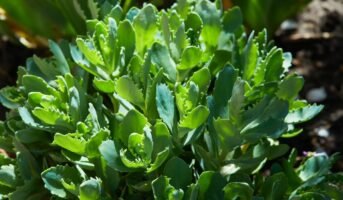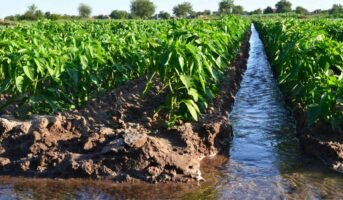What is Cassia Javanica?
Cassia Javanica is a small attractive tree widely used for its wood, as a shade, and as an ornamental tree. It has been naturalised in many regions, especially the tropics. The tree has its origins in Southeast Asia. It is a fast-growing tree that flowers in spring and sheds its leaves during winter. The trunk reaches a height of 30-40m. It is planted as a shade and ornamental tree on streets and gardens. It can grow at lower elevations in open forests. The tree is often cultivated in parks and on roadsides.
Cassia Javanica- Fact sheet
| Common Name | Pink Shower |
| Botanical Name | Cassia Javanica |
| Other common Names | Java Cassia, Apple Blossom, Golden Shower, and Rainbow Shower Tree |
| Family | Fabaceae |
| General Description | A deciduous tree not more than 30m tall. The tree grows well in tropical regions. The branches are droopy, slender, and grayish. Cassia Javanica is widely cultivated all over the tropical region. |
| Flowers | Small flowers appear at the end of the branches during the summer months. The colors of the flowers range from pale pink to crimson with yellow colored stamens. |
| Leaves | The leaves of the tree are arranged in a feather-like way. There are 12 pairs of leaves. Each leaflet is oval-shaped and around four to five inches long. |
| Fruit/Berries | The fruits are contained in long brown colored pods. |
Distribution of Cassia Javanica
Cassia Javanica is a native of Asia, including China, Indonesia, and Malaysia. It is cultivated all over the tropical region and is naturalized in Africa, Asia, America, the West Indies, Australia, and several islands in the Pacific Ocean. The tree is commercialized worldwide. It is heavily cultivated as an ornamental tree in India and Africa.

Source: Cabi.org
Biology and ecology
In Java, flowers bloom from October to December, and fruits are borne in the dry season. However, in Florida, USA, flowering happens from April to September. The seeds are 5700 to 8400 per kilo. Seed storage capacity is variable, and storing dry seeds for up to a year has been reported. Seeds germinate after seven days, and seedlings appear in fourteen to thirty days. The tree survives best in humid conditions with well-drained and deep soils.
Cultivation of Cassia Javanica
The tree is often found at elevations up to 400m. A mean annual temperature of 19 to 25 degrees Celsius and annual rainfall of 650 to 2400mm is comfortable for the tree. The tree can tolerate shade and drought. However, the tree requires full sunlight. The tree can survive in many habitats, with some subspecies prefer dry or moist habitats. Cassia Javanica trees can also stay on various soil types ranging from fertile volcanic loans to sandy and limestone soils. It is a very fast-growing tree. Unfortunately, the tree cannot withstand fire.

Source: Pinterest
Uses of Cassia Javanica
There are multiple uses of the tree.
- Culinary:
You can chew the seed with betel pepper for a stimulating chewing experience.
- Medicinally:
The ripe pods and seeds are used traditionally as a laxative. In addition, the bark and seeds have been used to treat fevers.
- Agroforestry:
The trees provide shade in plantations.
- Wood:
The wood is very durable for interior work. The wood from the tree is used for furniture making, cabinet making, and general construction. In addition, the smaller pieces of wood are used to make charcoal or use for fuel.
Propagation of Cassia Javanica
Once the seeds are ripe, it is time for propagation. You should extract the seeds with gloves on as they can be toxic. It is recommended to plant during the summer season. The seeds germinate best during long sunlight hours. It would help if you rinsed it in warm water to remove the pulp and then rubbed the seed coat around to make it weak. After this, the seeds need to be soaked in cold water for twenty-four hours.
Care of Cassia Javanica
Cassia Javanica needs rich, well-drained soil for growth. You can add Mulch during the summer season. Mulch retains the moisture of the ground and protects the roots during the winter. Once a year, fertilizer should be added and pruning should be completed. The seed should be planted in early spring when there is moist soil, high humidity, peat soil, and hormones for good growth. Regular watering is required once a week, even though the tree can sustain drought conditions. Full sunlight helps with the development and flowers to bloom.
Risk factors of Cassia Javanica
The tree has a broad native range. The tree has been proven to be invasive outside its native scope. The tree is highly adaptable to different environments and conditions. It is a pioneering tree in disturbed areas with a long-lived and fast-growing pace. It may alter the trophic level and damage ecosystem services. This tree may lead to habitat alteration and may serve as a threat to native species. Because the tree is widely used and introduced as an ornamental tree and its rapid growth, it can be a threat to local plant species.
Conclusion
Cassia Javanica is a tree with a large crown. Generally, the tree grows 10m in height, with some growing up to 30m. The tree is widely grown in gardens as an ornamental value. Furthermore, it is produced as a shade tree in plantations. There are some medicinal uses of this tree. The tree is usually found in open areas in the forest. Because it is a fast-growing tree, it is highly cultivated in many regions of the world.
FAQs
Any cultural importance to this tree?
Cassia Javanica is one of the nine auspicious trees in Thailand and is said to bring good luck. A subspecies native to the Philippines is honored in the Balayong festival. The flower is a symbol of female dominance.
Any toxicity associated with the Cassia Javanica tree?
There have been no reports of toxicity with the handling or usage of this tree.
What diseases and pests may infect the Cassia Javanica tree?
The tree is susceptible to insects such as aphids and whiteflies. It would help if you examined the underside of leaves for aphid infestation. Also, directly spraying the pest with an insecticide might help.
What is the environmental impact of Cassia Javanica?
The tree is considered invasive in Mexico, Nicaragua, and the Dominican Republic. The tree can invade disturbed and undisturbed areas in lowland tropical forests outcompeting natural vegetation. As it is a shade-tolerant tree, it can invade undisturbed forests.
How long do the seeds of the tree take to germinate?
The seeds germinate within four to six weeks. The ideal temperature for germination is around 20 to 25 degrees Celsius.
Housing News Desk is the news desk of leading online real estate portal, Housing.com. Housing News Desk focuses on a variety of topics such as real estate laws, taxes, current news, property trends, home loans, rentals, décor, green homes, home improvement, etc. The main objective of the news desk, is to cover the real estate sector from the perspective of providing information that is useful to the end-user.
Facebook: https://www.facebook.com/housing.com/
Twitter: https://twitter.com/Housing
Email: [email protected]











